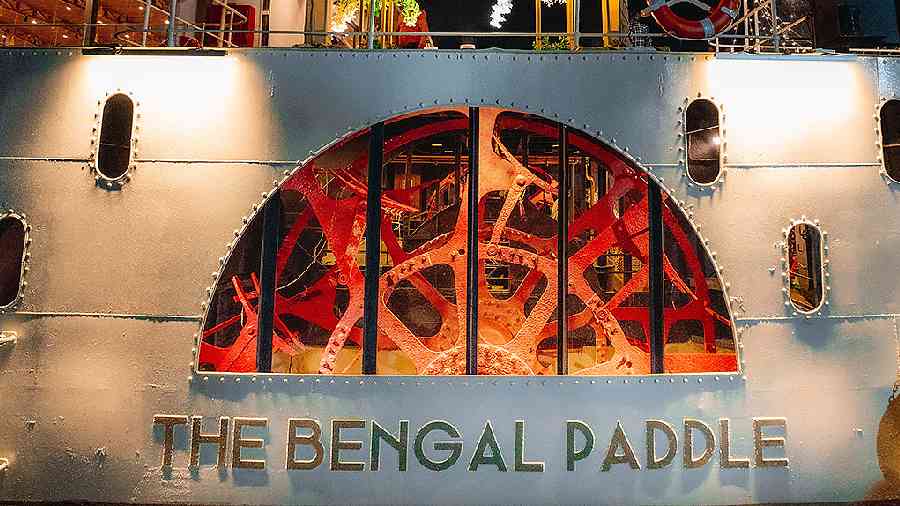From the house of Eastern Navigation Pvt. Ltd, which was established in 1957, an inland water transport and marine infrastructure, comes The Barge Company, which offers curated river cruise experiences on the Ganges. As a part of the latest offering, The Barge Company has restored a colonial-era paddle steamer for over two years. This paddle steamer was built originally in 1945 in Calcutta for sailing in the Bengal Delta, commissioned by the East India Company and was named PS Bhopal. The enterprise took over the restoration of this vessel which is India’s last surviving paddle steamer and named it The Bengal Paddle. Each corner of this steamer water vessel has been restored and relaunched in November 2022 to sail on the serene Hooghly river, to keep alive the vintage and heritage value. The Bengal Paddle has been reimagined as a multidisciplinary space having two open decks of 7000sq ft and has India’s first and only Riverine Museum showcasing the heritage of the Bengal Delta.
The one-of-a-kind museum is located on the lower deck of The Bengal Paddle, which was earlier the boiler room of the vessel. This museum captures the history of the Hooghly and the evolution of various aspects of marine navigation, with particular emphasis on steam propulsion. The museum is a walk-through experience where you can learn the history of The Bengal Paddle, its birth, the journey of the steamer and much more. The museum is showcasing restored ship artefacts which the 75-year-old enterprise has been collecting from different vintage water vessels.
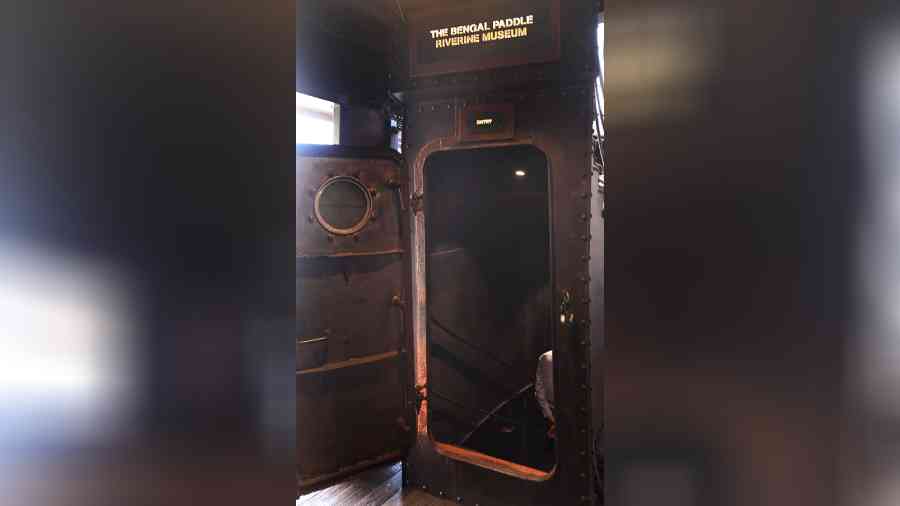
This entrance at the middle deck of the ship takes you down to the Riverine Museum situated on the lower deck which was the boiler room of the vessel in its early years.

The museum exhibits structures like this model which is the exact skeleton of the conventional marine propulsion system that is still used to run the ship today. It is a diesel engine with a wooden steering wheel, a gearbox, a propeller shaft and a propeller. The structures are exhibited in a way that visitors can come in and interact with them.
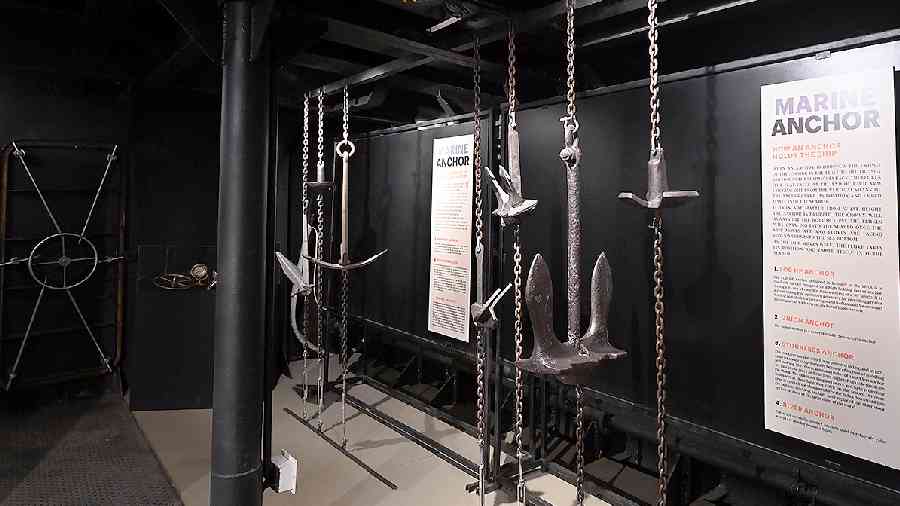
The museum also exhibits different kinds of marine anchors. Anchors of different shapes and sizes are used depending on the different soil beds.
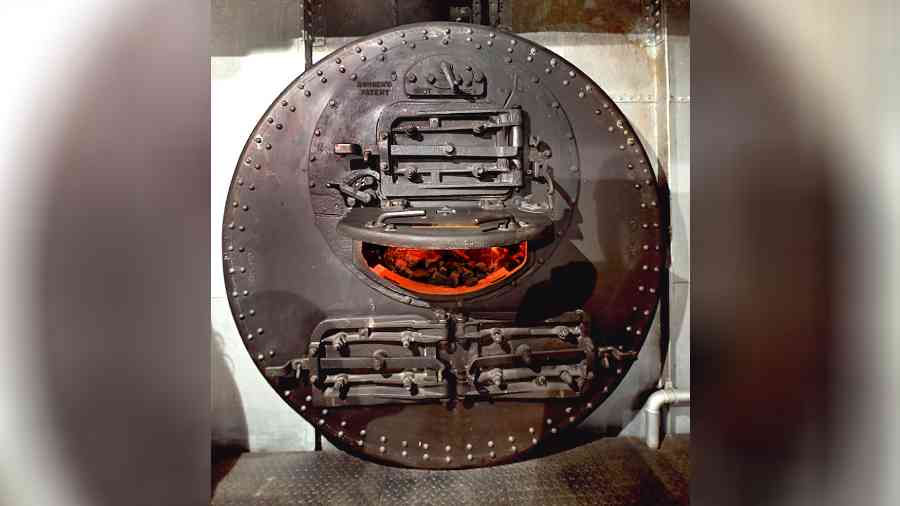
Being the former boiler room, this is the restored steam propulsion system where the ship crew used to shovel coal to generate steam.

The miniature paddle system gives the visitors an idea about how the ship runs and moves on the water.
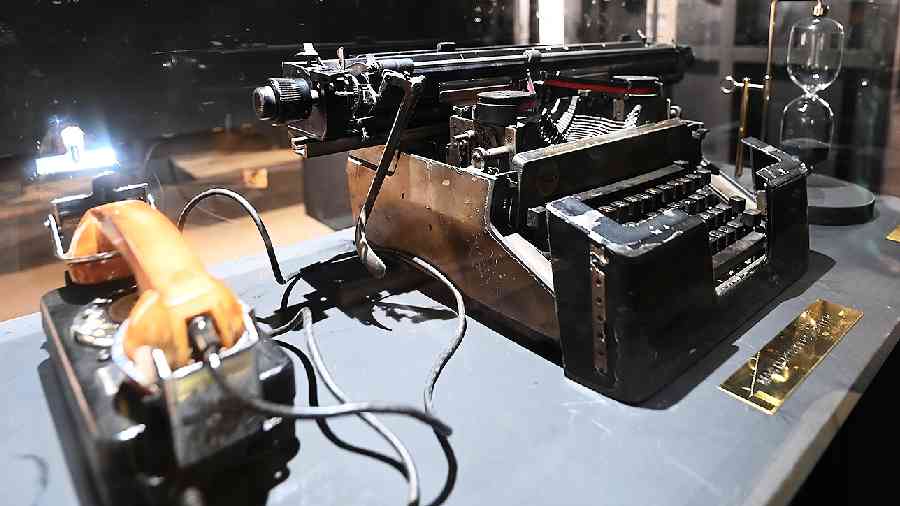
The original typewriter and intercom telephone was used by the captain of the ship to communicate with the ship crew

This is a copper life buoy with a flashlight which glowed as it came in contact with water, is collected from a World War I vessel. Those days copper life buoys were used instead of the plastic ones used now.

“The space is truly unique as it’s perhaps India’s only museum of this kind, especially because it is inside the Bengal Paddle. The visitors can see working models related to various aspects of riverine boats/vessels. One can also have an actual feel of how it feels to be on the captain’s deck! We have kept the space raw and industrial to give people the real feel of being on an industrial shipping boat. We have used a colour palette of beige, industrial orange and black for the space and all other components. The Singhee family had a treasure trove of materials which they had collected through the decades. It was my job to string them all together. Curating a Museum is a team effort. Contextual research, data collating and editing, visual interpretations of the data and graphic design, creating infographics, illustrating and drawings, the lighting and display had to come together to give us a seamless experience” said Swarup Dutta, scenographer and creative consultant to the Bengal Paddle.
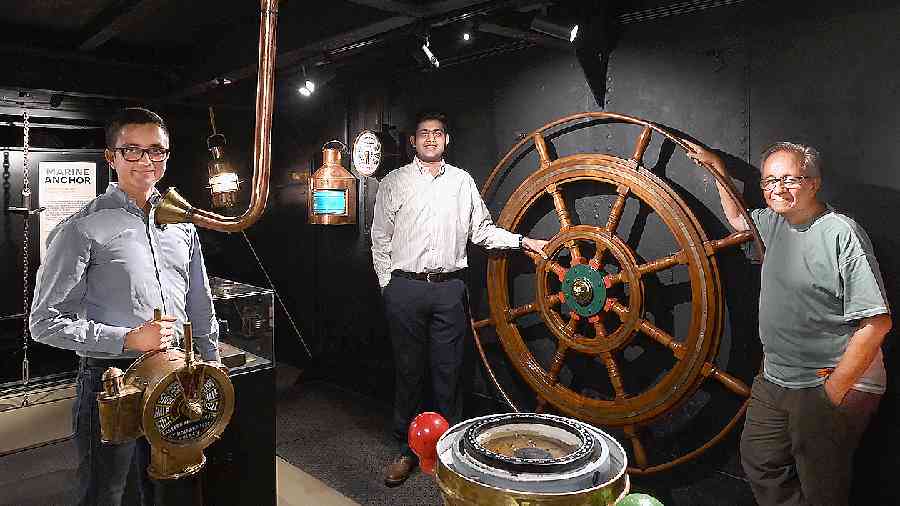
(L-R) Mukul Singhee, Piyush Singhee, and, Yaswant Singhee, director of Eastern Navigation Pvt, Ltd.“During the restoration of the paddle steamer, we decided to convert its boiler room into a museum. What began as a collection of antique marine artefacts, has emerged as an exploration into the niche world of marine technology and navigation, centred around the history of the mighty Hooghly River. Our efforts have spanned time and space with inputs from local and international experts, material from archives around the world, academic journals, and several personal accounts of mariners from the 1800s, to ensure historical accuracy. We hope that the people of Calcutta visit our museum and learn about those who have lived to tame, navigate and interact with the river which in turn has shaped the city of Calcutta,” said Mukul Singhee, co-founder of The Barge Company. This ‘World Heritage Day’ we are proud to open the doors of India’s first and only riverine museum to the people of Calcutta! We have tried to make the space interactive and dynamic so that you can have an immersive experience. The vision was not to have a static space but for people to interact with different navigational equipment and experience our floating museum. Our hope is that every person who walks down the steps into the boiler room of the Bengal Paddle (the space in itself is historic and unique) comes out with a profound perspective on the history, culture and undeniable legacy of the Hooghly. We realised that the museum is an opportunity to bring unsuspecting guests to share our feelings of awe for this river and infuse an appreciation for the ‘heritage’ value of this 80-year-old vessel”, added Piyush Singhee, cofounder of the Barge Company.
